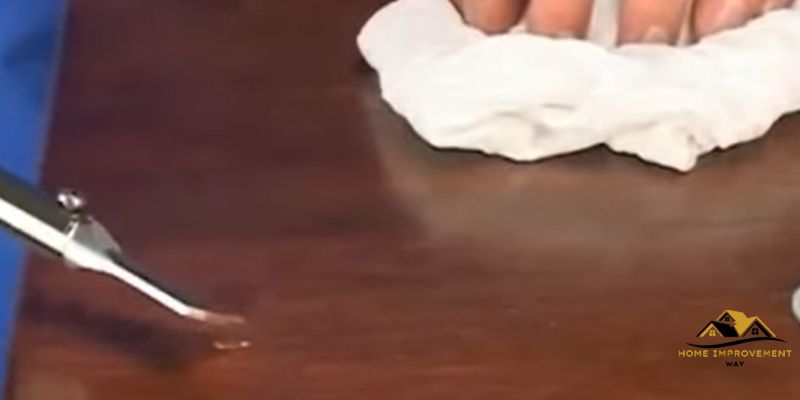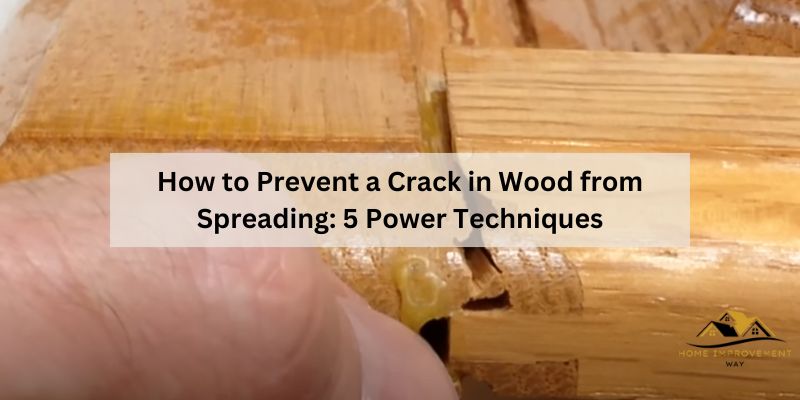To stop a crack in wood from spreading, you can apply wood glue into the crack and clamp the wood together until the glue dries. This will help prevent further separation and strengthen the wood.
Additionally, you can use a wood filler or epoxy to fill the crack and sand it down for a smooth finish. Regularly inspect and maintain the wood to prevent cracks and ensure its longevity. Taking these steps will effectively stop a crack in wood from spreading and avoid further damage to the piece.
Clarity Wood Cracks
Wood is a versatile and natural material that adds warmth and charm to our homes. However, it is not immune to cracks. Understanding wood cracks and their causes can help you take the necessary steps to prevent them from spreading and keep your wooden items in good condition for years to come. In this section, we will explore the various factors that contribute to wood cracks and the different types you might encounter.
What Causes Wood Cracks?
Wood cracks can be caused by several factors, including:
- Increased moisture levels
- Extreme temperature fluctuations
- Improper drying techniques
- Structural stress
- Age and natural aging processes
Moisture is one of the primary culprits behind wood cracks. When wood absorbs moisture, it expands. As it dries, the wood contracts, which can lead to cracks. Temperature fluctuations can accelerate this process, causing the wood to expand and contract rapidly, resulting in cracks. Additionally, improper drying techniques, such as using high heat or direct sunlight, can cause the wood to dry too quickly, leading to cracks. Furthermore, structural stress from heavy loads or improper installation can weaken the wood fibers, making it more prone to cracks. Lastly, age and natural processes, such as wood drying out over time, can also contribute to cracking.

Types Of Wood Cracks
Wood cracks can manifest in various forms, such as:
- Surface cracks: These cracks only affect the outermost layer of the wood and are often shallow and relatively easy to repair.
- Checks: Checks are cracks that occur along the wood grain, running parallel to each other. They may or may not extend through the entire thickness of the wood.
- Shakes: Shakes are cracks that occur between the growth rings of the wood. They can run radially or tangentially and are often caused by stress or pressure.
- Splits: Splits are more severe cracks that extend through the entire thickness of the wood. They can occur due to excessive stress or improper drying techniques.
- Warping: Although not a crack in the traditional sense, warping refers to the distortion of the wood, resulting in uneven surfaces or bent shapes. Warping can cause stress on the wood fibers, leading to cracks.
By understanding the different types of wood cracks and their causes, you can be better equipped to tackle them. In the next section, we will explore effective ways to stop a crack in wood from spreading, helping you preserve the beauty and integrity of your wooden items.
Identifying The Extent Of The Crack
To prevent a crack in wood from spreading, it’s crucial to identify the extent of the damage accurately. By carefully examining and assessing the crack, you can determine the appropriate steps to take for repair or prevention. Keep an eye out for any signs of lengthening or widening to address the issue promptly.
Before attempting to repair a crack in wood, it is important to first identify the extent of the damage. This will help you determine the best course of action and prevent the crack from spreading further. Here are two key steps to follow:
Checking The Length And Depth
To start, check the length and depth of the crack. This will give you an idea of the severity of the damage. Using a ruler or measuring tape, measure the length of the crack. Make a note of the measurement for reference. Next, use a small probe or the tip of a knife to carefully assess the depth of the crack. By gently pushing the probe into the crack, you will be able to determine how far the crack extends into the wood.
Inspecting For Any Additional Damage
In addition to checking the length and depth of the crack, it is crucial to inspect the surrounding area for any signs of additional damage. Look for splintering, discoloration, or any other abnormalities that may indicate further deterioration. If you notice any other issues, it is essential to address them along with the crack to ensure a thorough repair.
By properly identifying the extent of the crack in wood, you can effectively determine the appropriate steps needed to stop it from spreading. This proactive approach will help preserve the integrity of the wood and prevent further damage.
Preventing The Spread Of Wood Cracks
Prevent the spread of wood cracks by addressing them as soon as possible. Apply wood filler or epoxy to the crack, sand it smooth, and then finish with a protective coating to ensure its stability and stop further spreading. Regularly inspect and maintain wooden surfaces to minimize the risk of cracks.
Using Wood Fillers And Putty
If you notice a crack in your wooden furniture or flooring, don’t fret! There are effective ways to prevent the crack from spreading and save your precious wood from further damage. One of the best methods is by using wood fillers and putty.
Wood fillers: Wood fillers, also known as wood putty, are a great solution to fix cracks in wood. These fillers come in different colors to match your wood’s shade, ensuring a seamless repair. When applying wood fillers, make sure the crack is clean and free from dust or debris. Use a putty knife to spread the filler into the crack, pressing firmly to ensure it fills the entire gap.
Putty: Putty is another fantastic option to stop the spread of cracks in wood. Similar to wood fillers, putty is available in various colors and can be easily applied to the crack. Gently press the putty into the crack using your fingers or a putty knife, making sure it snugly fills the gap.
Reinforcing With Wood Glue And Clamps
If you’re looking for a more sturdy approach to prevent a crack from spreading in wood, using wood glue and clamps is a reliable solution.
Wood glue: Start by applying wood glue generously along the crack, ensuring it seeps into the wood fibers. Use a brush or your finger to spread the glue evenly. The glue will bind the wood fibers together, strengthening the area and preventing further splitting or spreading.
Clamps: Once the wood glue is applied, carefully align the crack and apply gentle pressure. Secure the crack by using clamps to hold the wood in place. Leave the clamps on until the glue dries completely, typically overnight. Once the glue is dry, remove the clamps, and your wood will be fortified, ready to withstand further stresses or strains.

Applying Wood Stabilizers And Sealants
For cracks that require extensive reinforcement, utilizing wood stabilizers and sealants is a highly effective approach.
Wood stabilizers: Wood stabilizers penetrate deep into the wood, hardening and reinforcing the fibers. Applying a wood stabilizer to a crack prevents it from expanding or worsening over time. Follow the instructions provided with the stabilizer and apply it generously to the crack, making sure it reaches the inner layers of the wood.
Wood sealants: Once the wood stabilizer has dried, it’s time to apply a wood sealant. The sealant acts as a protective barrier, preventing moisture and further damage. Apply a layer of sealant over the crack, evenly distributing it with a brush or roller. Allow the sealant to dry completely before using or exposing the wood to any moisture.
Conclusion
Taking prompt action is crucial when it comes to preventing the spread of a crack in wood. By identifying the cause and using appropriate techniques, such as filling, reinforcing, or stabilizing the crack, you can effectively restore and preserve the integrity of the wood.
Remember, regular maintenance and monitoring are key to avoid further damage and ensure the longevity of your wood items.


